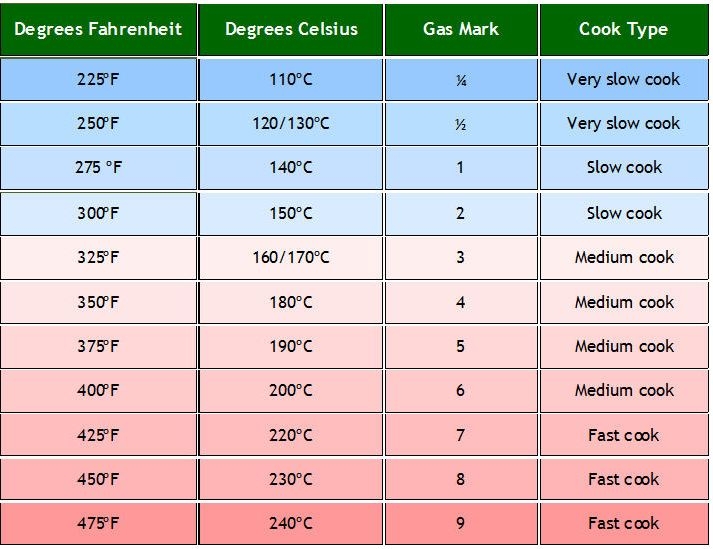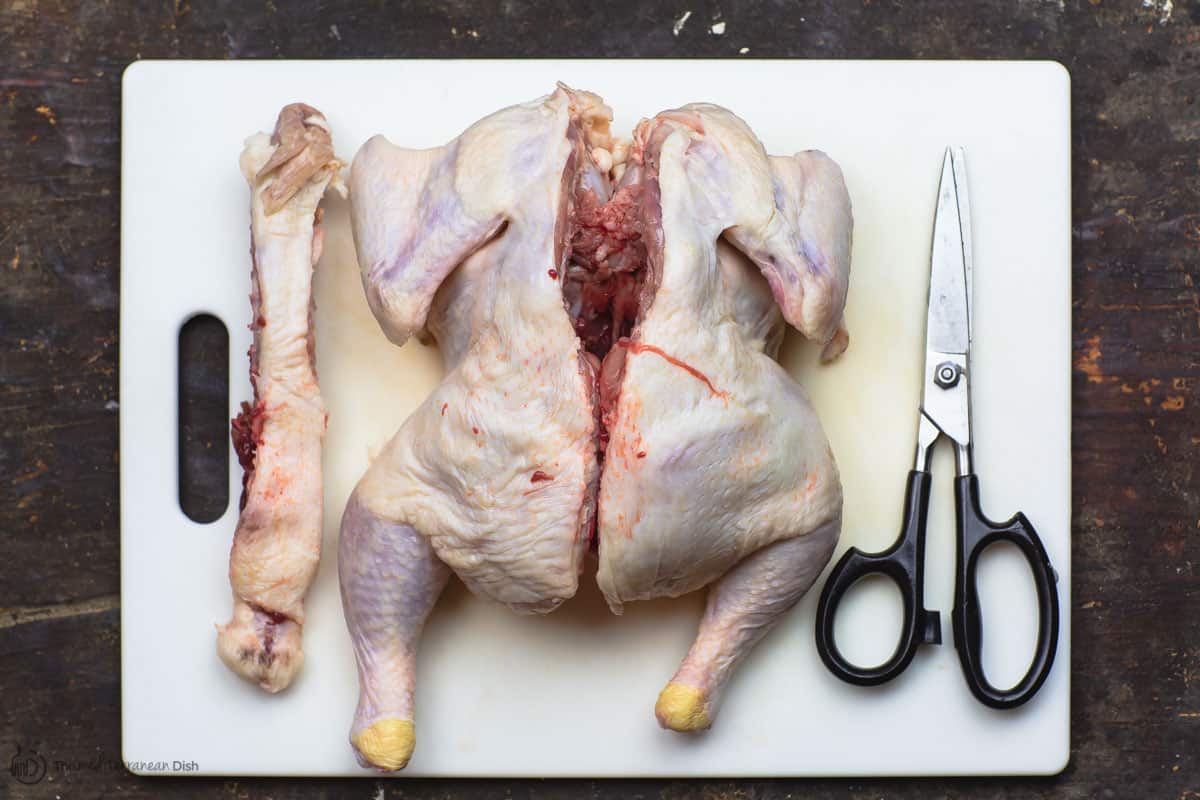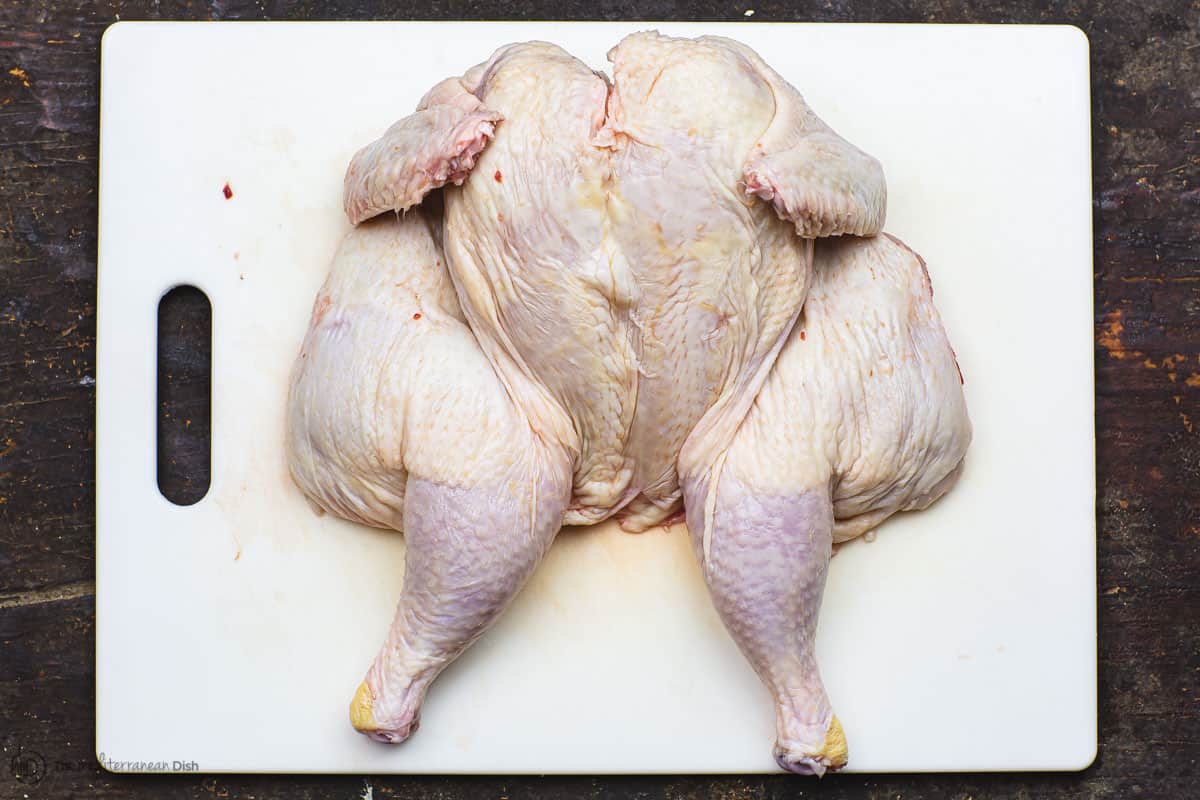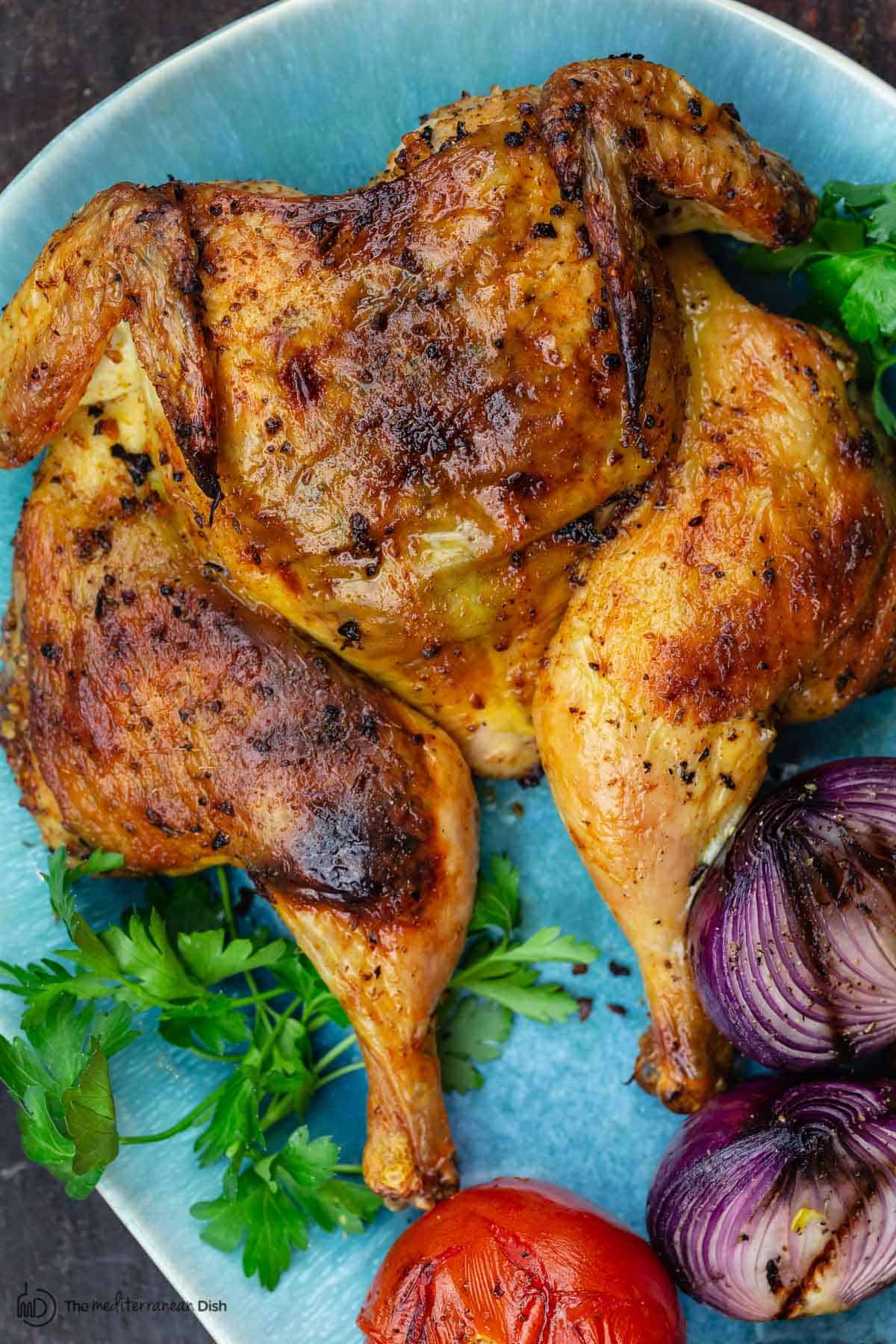Grilling a juicy, flavorful whole chicken can seem daunting for many backyard cooks Getting the temperature right is key to success Undercooking poses safety risks, while overcooking yields dry, tough meat. So what temperature should you grill a whole chicken at?
The ideal grill temperature for whole chicken ranges from 350°F to 400°F using indirect heat This allows the interior to cook through without burning the outside, Aim to bring the thickest part of the thighs and breasts to an internal temperature of 165°F, Monitor temperature closely and rotate periodically for even cooking
Follow these best practices for grilling tender, juicy whole chicken every time
Why Temperature Matters
Poultry needs to reach 165°F internally to eliminate bacteria like Salmonella. The USDA recommends this safe minimum temperature. Yet many people still undercook chicken, especially the thighs and legs.
High heat also dries out the lean breast meat. Finding the right balance is essential. A grill temperature between 350-400°F lets you achieve safety and moisture.
Indirect heat prevents flare-ups from burning the skin. The hot side sears while the cooler side gently roasts. Close the lid to circulate heat evenly around the chicken.
Choosing a Thermometer
A digital instant-read thermometer takes the guesswork out of grilling. It provides an accurate temperature reading in seconds. Look for one with a 3-4 inch steel probe to reach the chicken’s center.
Leave it in while grilling for frequent checks. Probe thermometers with a cable and digital display are perfect for monitoring whole birds.
Thermometers are affordable, widely available, and simple to use. This useful tool guarantees perfect results every time.
Step-by-Step Grilling Process
Follow these straightforward steps for flawlessly grilled whole chicken.
1. Prep the Bird
-
Trim excess fat and remove giblets from the chicken cavity. Rinse well.
-
Pat very dry with paper towels. This aids browning.
-
Brine if desired for added moisture and flavor.
-
Coat with oil or dry rub. Season generously with salt and pepper.
-
Let sit at room temperature 20-30 minutes before grilling.
2. Preheat Grill to 350-400°F
-
For gas grills, heat grill to medium (375°F).
-
Charcoal grills target 350°F: Spread coals evenly and let flames die down.
-
Clean grates well. Oil them to prevent sticking.
3. Sear the Chicken
-
Place chicken skin-side down over direct heat. Grill 5 minutes per side.
-
This browns the skin and seals in juices. Avoid burning.
4. Grill Indirectly
-
Move chicken to indirect heat, away from burners or coals.
-
Insert a probe thermometer into thickest part of thigh, avoiding bone.
-
Close lid and monitor temperature. Rotate if browning unevenly.
-
Cook until breast and thighs reach 165°F, about 60-90 minutes total.
5. Check for Doneness
-
Verify 165°F in both light and dark meat with instant-read thermometer.
-
Thighs may finish slightly sooner than breasts.
-
If needed, move to cooler side to avoid overcooking done portions.
6. Let Rest and Carve
-
Allow chicken to rest 10-15 minutes before carving. This keeps juices inside.
-
Carve breast and leg portions. Cut between joints to separate.
-
Serve warm, topped with pan juices for added moisture and flavor.
Grilling Tips for Whole Chicken
Keep these tips in mind for the very best results:
-
Brining adds flavor and moisture. Soak chicken in saltwater 30 minutes up to 2 hours. Rinse before grilling.
-
Resist pressing down as it grills. This forces out juices, making meat dry. Let it cook undisturbed.
-
Use tongs and spatulas rather than forks. Piercing lets juices escape. Careful flipping prevents this.
-
Rotate periodically so all sides brown evenly. Watch for flare-ups or burning.
-
Allow to rest before slicing. Never cut straight from grill. Resting seals in juices.
Common Grilling Mistakes
It’s easy to make mistakes when grilling whole chicken. Watch out for these pitfalls:
-
Undercooking – Always verify 165°F in both light and dark meat. Appearance alone doesn’t indicate doneness.
-
Burning skin – Flare-ups quickly char the skin. Keep a spray bottle on hand to tame flames.
-
Uneven cooking – Frequently rotate chicken and check all areas with a thermometer. Move cooked portions to a cooler spot.
-
Overcooking breast meat – The lean breasts often finish sooner. Monitor temperature to avoid drying them out.
-
Cutting too soon – Skipping resting squeezes out juices, making chicken dry. Rest at least 10 minutes before slicing.
Gas vs. Charcoal Grills
You can grill whole chicken successfully on either a gas or charcoal grill. Follow these tips for each:
Gas Grills
-
Preheat to medium heat, around 375°F. Use two burners for indirect setup.
-
Place chicken over unlit burners and close lid. Add wood chips in foil for extra smoke.
-
Check temperature regularly and rotate chicken for even cooking.
Charcoal Grills
-
Mound coals on one side, leaving the other empty. Target 350°F.
-
Sear chicken over hot coals, then move to empty side, lid closed. Add fresh coals and wood chunks as needed.
-
Carefully rotate chicken and monitor temperature. Add lit coals slowly if heat drops.
Either way, maintaining even, indirect heat between 350-400°F lets you achieve juicy, safe results. With the right grill temperature, grilling whole chicken is foolproof.
Grilled Whole Chicken Perfection
Grilling whole chicken at the ideal temperature delivers tender, mouthwatering results. For the backyard cook, success comes down to two key factors:
-
Indirect heat between 350-400°F. This prevents burning while thoroughly cooking the interior.
-
Monitoring temperature with a reliable digital thermometer. Checking for 165°F in both light and dark meat guarantees safety and juiciness.
Additionally, proper preparation and resting seal in moisture and flavor. Follow these guidelines for your best grilled whole chicken yet. Invite family and friends, fire up the grill, and enjoy the savory, satisfying results. Happy grilling!

Three steps to the best grilled whole chicken
- Spatchcock
- Marinate
- Grill over indirect heat
Often times, cooking a whole chicken on the grill produces results that are less than exciting–overcooked and dry in some parts, or under-cooked in others.
The answer? Spatchcock!
We’ve talked about spatchcock chicken in detail before. It means to basically split or butterfly a chicken so that it is flattened. First, you’ll remove the backbone, then break breastbone by pressing down on the wings to flatten the bird.

Spatchcock or butterflied chicken is ideal for grilling. By being able to lay the chicken flat on the grill, it easily chars and absorbs smoke’s flavor, and the skin will crisp up while the chicken remains nice and juicy on the inside.

Some supermarkets actually sell whole chicken already butterflied, and you can also ask your butcher to do it for you.
Now, let’s talk flavor! It’s all in the magical Mediterranean-style marinade.
For grilling a whole chicken, rather than a yogurt chicken marinade, I go for a garlic and citrus marinade with quality extra virgin olive oil and a combination of warm spices and bold herbs like oregano and thyme.
The olive oil in the marinade plays a big role in imparting color and helping the chicken skin crisp up.
Here’s what’s in the marinade (exact measurements in the print-friendly recipe below):
- Extra virgin olive oil. I used Private Reserve Greek extra virgin olive oil.
- Juice and zest of 2 lemons.
- Dry oregano
- Fresh thyme
- Coriander
- Paprika
- Cumin
- Black pepper
- Cayenne pepper
- Garlic cloves. Fresh garlic cloves are best here. I used 12 garlic cloves, peeled and minced.
Tip: For best flavor, allow the chicken to marinate in the fridge for 2 to 4 hours before grilling.

How long does it take to grill whole chicken?
We used an outdoor gas grill for this recipe. Once spatchcocked, our grilled chicken will take about 45 minutes to 1 hour over indirect heat.
While the grill is heated to 400 degrees F, the burner (or burners) directly below the chicken will be turned off, the other burners surrounding it will be on. That’s what we mean by indirect heat here (be sure to watch the video below to see exactly how Adam places the chicken on the grill).
Why indirect heat? Grilling whole chicken over indirect heat is the secret to juicy, well-cooked chicken. The indirect heat essentially roasts the chicken to perfect doneness without dealing with flare-ups, burnt chicken skin, or underdone meat.
What is the Safe Temperature to Cook Chicken to?
FAQ
What temperature should I grill a whole chicken at?
For grilling a whole chicken, aim for a grill temperature between 350°F and 450°F (175°C to 232°C), which is medium-high heat.
Is it better to grill chicken at 350 or 400 on a gas grill?
Looks like you’re seeing a trend. Chicken is best cooked at 350 or higher, definitely not low and slow like beef or pork. Sometimes I’ll throw chicken on at 225 while I wait for the family to get home, then crank it up to 400 or finish on my gas grill. The high heat tends to seal the moister inside the chicken.
Is chicken done at 165 or 180?
What is the right temperature for grilled chicken?
The internal temperature of grilled chicken should reach 165°F (74°C) to ensure it is safe to eat. This temperature ensures harmful bacteria like salmonella are killed.
